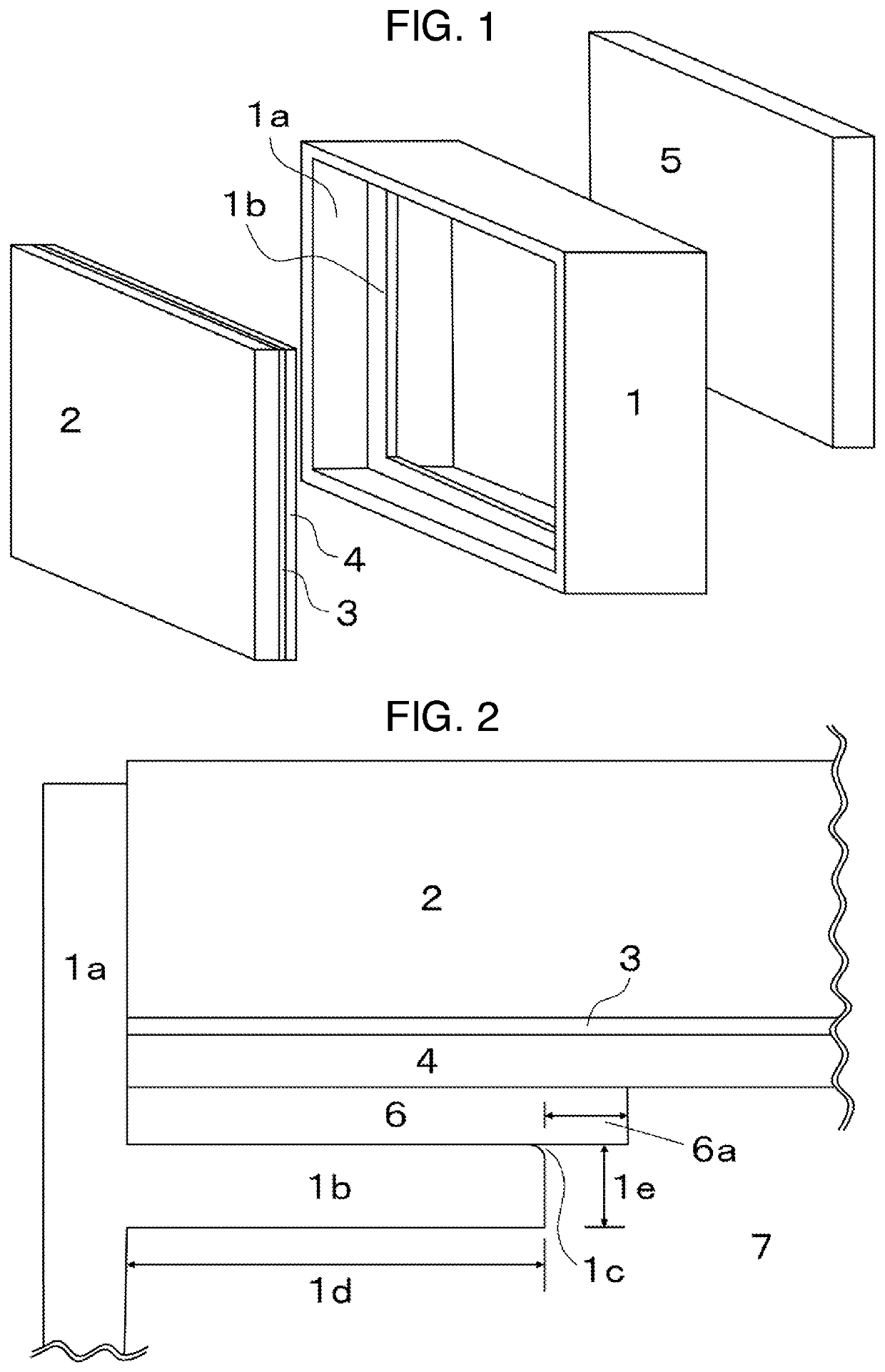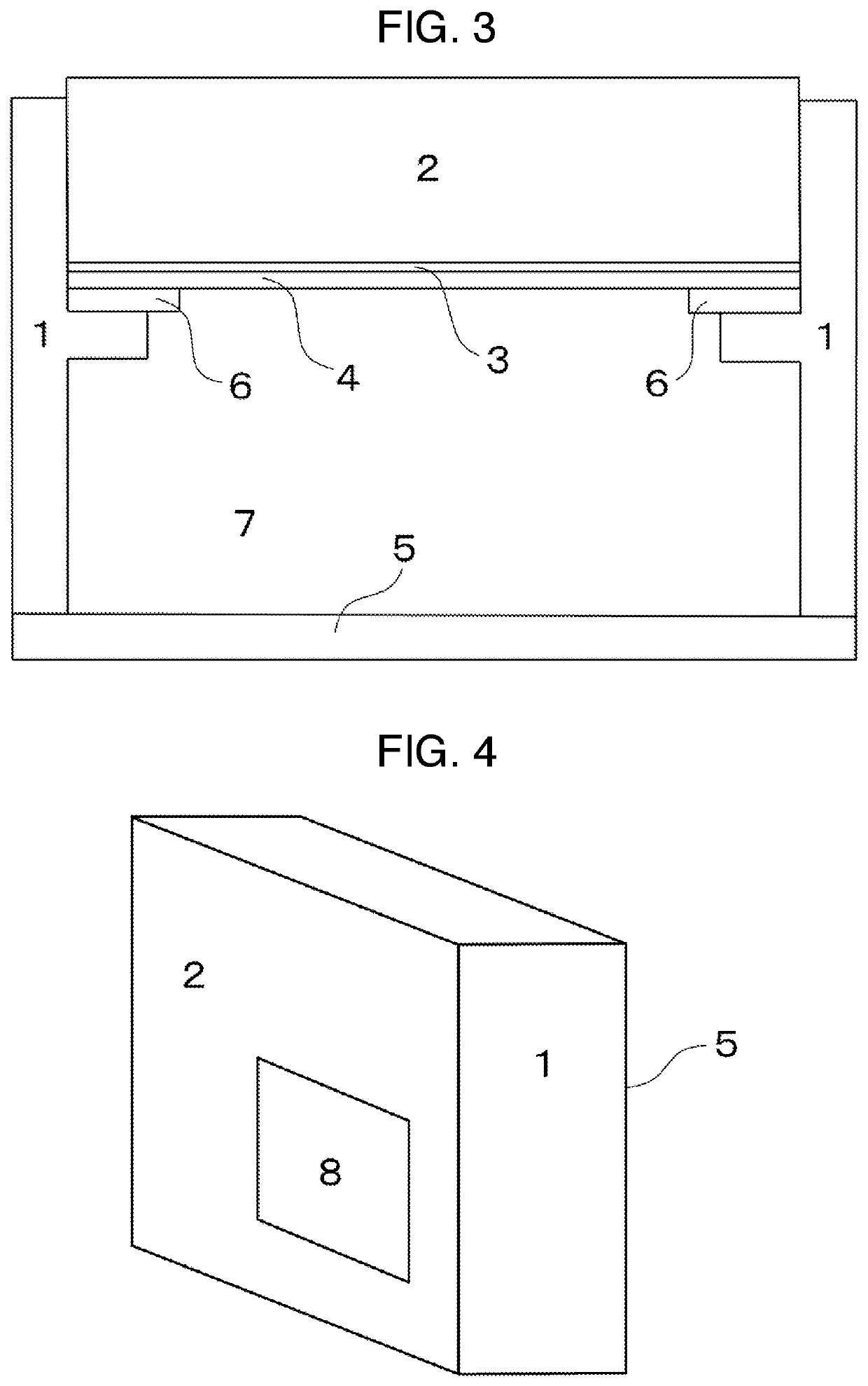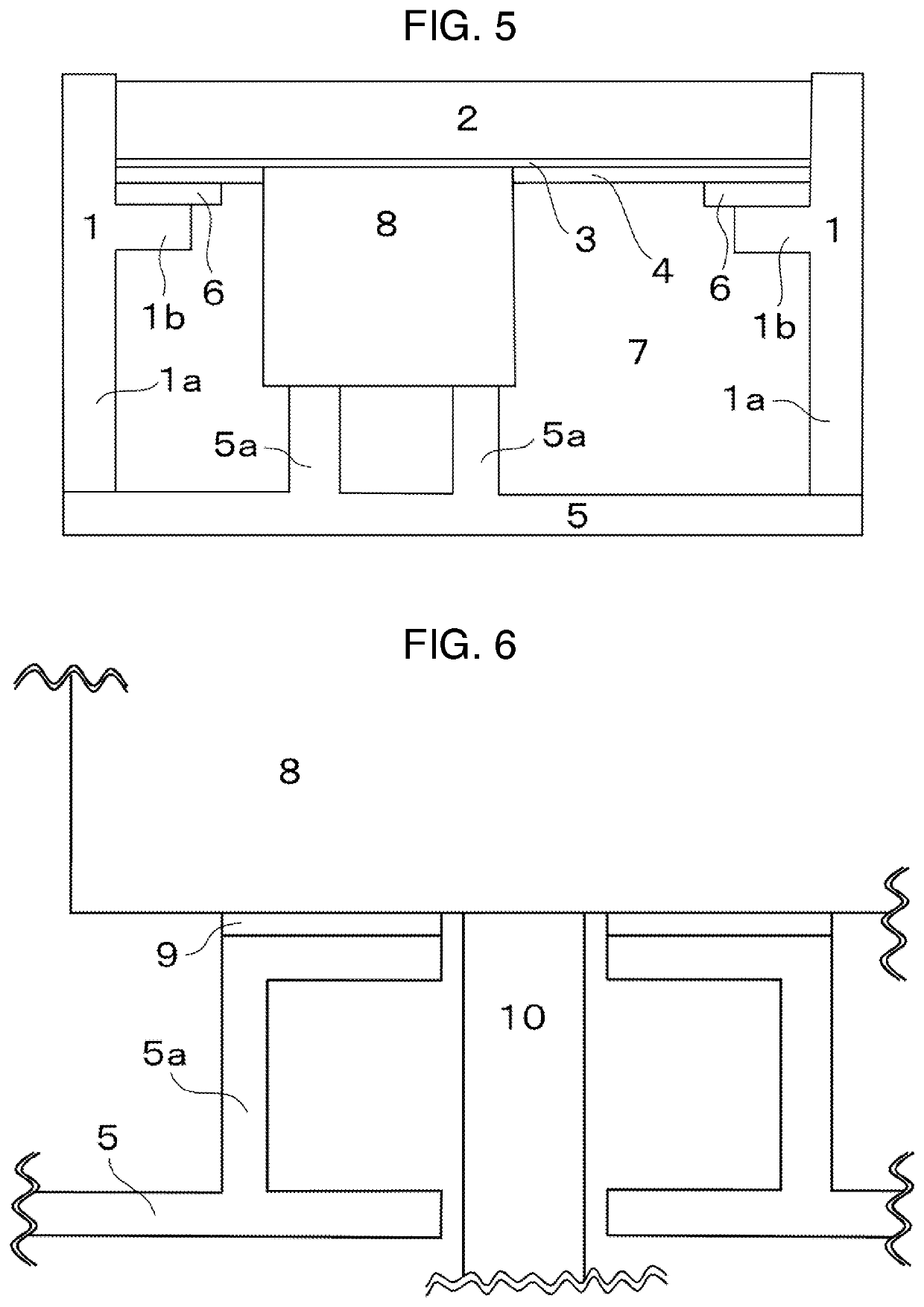Door body
- Summary
- Abstract
- Description
- Claims
- Application Information
AI Technical Summary
Benefits of technology
Problems solved by technology
Method used
Image
Examples
example 1
[0341]Both surfaces of the acrylic resin sheet 1 of the (a1-1) were subjected to a corona discharge treatment. Both the surfaces had a wetting index of 64 mN / m. Subsequently, the second hard coat forming coating material of the (H2-1) was applied onto one surface of the acrylic resin sheet 1 of the (a1-1) such that the wet thickness was 40 μm (thickness after curing 22 μm) using a die type applicator. Subsequently, the resulting product was caused to pass through a drying furnace set at an inner temperature of 90° C. at a line speed such that time required for passing from the inlet to the outlet was one minute. Thereafter, the resulting product was treated using a curing apparatus having a high-pressure mercury lamp type ultraviolet irradiator 11 and a mirror-finished metal roll 12 having a diameter of 25.4 cm disposed opposite to each other (see FIG. 10) under conditions of a temperature of the mirror-finished metal roll 12 of 90° C. and an integrated amount of light of 80 mJ / cm2....
examples 2 to 16
[0342]Production of a hard coat laminated sheet and measurement and evaluation of physical properties thereof were performed in a similar manner to Example 1 except that the coating material illustrated in one of Tables 5 to 7 was used in place of the (H1-1). The results are illustrated in one of Tables 5 to 7.
examples 17 to 30
[0343]Production of a hard coat laminated sheet and measurement and evaluation of physical properties thereof were performed in a similar manner to Example 1 except that the coating material illustrated in one of Tables 7 to 9 was used in place of the (H2-1). The results are illustrated in one of Tables 7 to 9.
PUM
| Property | Measurement | Unit |
|---|---|---|
| Temperature | aaaaa | aaaaa |
| Length | aaaaa | aaaaa |
| Length | aaaaa | aaaaa |
Abstract
Description
Claims
Application Information
 Login to View More
Login to View More - R&D
- Intellectual Property
- Life Sciences
- Materials
- Tech Scout
- Unparalleled Data Quality
- Higher Quality Content
- 60% Fewer Hallucinations
Browse by: Latest US Patents, China's latest patents, Technical Efficacy Thesaurus, Application Domain, Technology Topic, Popular Technical Reports.
© 2025 PatSnap. All rights reserved.Legal|Privacy policy|Modern Slavery Act Transparency Statement|Sitemap|About US| Contact US: help@patsnap.com



